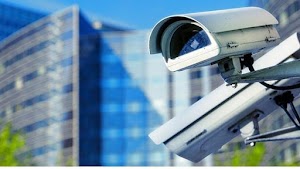Security needs aren’t one-size-fits-all. A retail store faces completely different challenges than a manufacturing warehouse or university campus.
Modern AI-powered cameras, night vision technology, and lens options create powerful combinations when matched to specific industry requirements. But Florida’s unique environment adds another layer of considerations that Tampa businesses must navigate.
Summary: Tampa businesses need security systems tailored to their industry and Florida’s unique environment. Combine intelligent security cameras (for visible detection), night vision technology (IR for reliability or color for detail), and lens types (fixed for consistency or varifocal for flexibility) based on your specific operational needs. Consider humidity, heat, and storm resilience when selecting security camera equipment that has optimal performance in Tampa’s climate.
The Technology Toolkit
AI cameras today go beyond simple recording. They distinguish between people and vehicles, count visitors accurately, and monitor specific zones with customizable alerts. These smart features help businesses focus on real threats while reducing false alarms from Florida’s frequent afternoon thunderstorms or wildlife.
Night vision comes in two main forms: traditional infrared that produces clear black-and-white footage, and 24/7 color systems that maintain color detail in low light. Each handles Tampa’s humid conditions differently and serves different business needs.
Lens choice affects everything else. Fixed lenses provide consistent coverage at predictable costs, while varifocal lenses offer adjustment flexibility that helps businesses adapt to changing requirements or challenging mounting locations.
The key is matching these technologies to real-world business operations.
Retail: Managing Customers and Inventory
Tampa retailers deal with year-round tourist traffic, seasonal fluctuations, and the challenge of monitoring both indoor climate-controlled spaces and outdoor areas exposed to intense heat and humidity.
Entrance monitoring becomes crucial for stores managing capacity limits or tracking peak shopping times. AI people counting works reliably even when customers cluster together during Florida’s sudden downpours that drive everyone indoors simultaneously. The system tracks entries and exits across multiple doors, providing real-time occupancy data that helps with staffing decisions.
When it comes to after-hours security, AI detection distinguishes between actual intruders and the palm fronds that constantly move in Tampa’s evening breezes. Zone-based monitoring lets retailers set different alert levels – immediate notification for someone approaching the safe, but passive recording for activity near windows where tree shadows create constant movement.
As for night vision technology, the choice depends on specific retail needs. Traditional IR works excellently for basic after-hours monitoring, handling Tampa’s high humidity without the light pollution issues that 24/7 color systems face from nearby street lights and neon signs. However, retailers needing to identify clothing colors or vehicle details for theft investigations benefit from color night vision despite the higher operating costs.
When considering lens selection, the choice varies by location within the store. Fixed lenses work well for consistent areas like checkout lanes where coverage requirements don’t change. Varifocal lenses make sense for seasonal retail spaces where merchandise layouts shift regularly, allowing managers to adjust camera views without requiring professional reinstallation.
Educational Institutions: Campus-Wide Protection
Florida schools face unique security challenges from extreme weather events, large outdoor areas that stay active late into the evening, and the need to balance security with welcoming environments for students and families.
Campus entry points require robust vehicle detection that works reliably during Tampa’s intense afternoon thunderstorms. AI systems distinguish between authorized school vehicles and unknown cars, while people counting helps administrators understand peak arrival and departure times for better traffic management.
Looking at athletic fields specifically, they present particular challenges in Florida’s climate. Cameras must withstand daily temperature swings from air-conditioned buildings to 95-degree outdoor heat, plus sudden temperature drops during storm systems. IR night vision excels here, providing clear monitoring of after-hours field activity without creating light pollution that disturbs neighboring residential areas.
For building entrances, the monitoring needs are quite different. These areas need 24/7 monitoring that handles the transition from bright Florida sunshine to dimly lit indoor spaces. Varifocal lenses prove valuable because they allow security staff to adjust coverage as student traffic patterns change throughout the school year or when outdoor events require modified access procedures.
The humid environment affects equipment placement significantly. Cameras need additional weather protection, and IR systems require more frequent cleaning due to the spider webs and debris that accumulate quickly in Florida’s bioactive environment.
Banking and Financial Institutions: Maximum Detail and Reliability
Tampa banks operate in a regulatory environment that demands clear identification capabilities while serving customers who often arrive directly from outdoor parking areas in bright sunlight.
Moving to ATM protection, these installations require security cameras that capture facial details and license plates clearly, regardless of lighting conditions. 24/7 color systems work well for ATMs with adequate supplemental lighting, providing the color detail that helps law enforcement with investigations. However, traditional IR proves more reliable for standalone ATMs in locations where light pollution or ambient lighting creates challenges.
The transition from Florida’s intense outdoor brightness to controlled indoor lighting creates exposure challenges that wide dynamic range cameras help address. The camera will automatically adjust settings to optimize for changing lighting conditions throughout the day without requiring physical camera repositioning.
Beyond security cameras, queue management systems use AI people counting to monitor customer flow and ensure adequate staffing during peak periods. This becomes particularly important during tourist season when branch traffic patterns become unpredictable.
Environmental considerations are critical. Banks need cameras that operate reliably despite the constant air conditioning load changes as customers enter from 90-degree heat, plus the humidity fluctuations that come with Florida’s daily weather patterns.
Warehouses and Manufacturing: Large-Scale Monitoring
Florida’s industrial operations face the challenge of monitoring vast spaces that transition between indoor climate-controlled areas and outdoor loading docks exposed to extreme heat and humidity.
Loading dock monitoring requires systems that handle dramatic lighting changes as truck doors open and close throughout the day. AI vehicle detection distinguishes between scheduled deliveries and unauthorized vehicles, while zone monitoring tracks loading activity without triggering false alarms from normal forklift operations.
Large warehouse spaces favor fixed lens cameras for consistent coverage areas, but varifocal systems prove valuable near loading docks where trucking changes in operations might require coverage adjustments. The ability to remotely modify camera views helps facilities adapt to changing tenant needs or modified workflows without extensive reinstallation costs.
Night vision choice depends on specific operational needs. IR systems handle Florida’s humidity well and provide adequate detail for perimeter monitoring and basic activity detection. Facilities requiring license plate capture or detailed personnel identification benefit from 24/7 color systems despite the higher infrastructure requirements.
The corrosive effects of salt air in coastal Tampa locations require additional equipment protection and more frequent maintenance schedules, particularly for IR systems where emitter degradation accelerates in harsh environments.
Public Spaces and Government Facilities: Comprehensive Coverage
Tampa’s government facilities and public spaces must have security camera systems that can monitor diverse areas while handling everything from routine civic activities to emergency situations during Florida’s active hurricane season.
Multi-area monitoring requires coordination between indoor and outdoor cameras that handle dramatic environmental differences. AI systems help security staff focus on genuine concerns rather than the constant motion from palm trees, birds, and wind-blown debris that characterizes Florida’s outdoor environment.
Public access areas use people counting to manage capacity and ensure ADA compliance during events. The system adapts to Tampa’s outdoor event season when activities shift between indoor and outdoor venues based on weather conditions.
Emergency monitoring systems must operate reliably during power outages common during Florida’s storm season. IR night vision systems typically require less power than 24/7 color systems, making them more practical for backup power scenarios.
Varifocal lenses provide flexibility for facilities that host varying events throughout the year, allowing security staff to adjust coverage for different crowd patterns or seasonal activities without requiring professional camera repositioning.
Choosing the Right Combination
The most effective security systems combine these technologies based on specific operational needs rather than simply choosing the most advanced options available. A Tampa retailer might use fixed lens IR cameras for basic perimeter monitoring while installing varifocal color cameras at main entrances where detailed identification matters most.
Consider Florida’s environmental factors throughout the planning process. Humidity affects all electronic equipment, but impacts IR and color systems differently. Heat buildup influences camera placement and housing requirements. Frequent storms require robust mounting and backup power considerations.
Professional assessment helps identify which combination of AI features, night vision technology, and lens types will deliver the security coverage your specific industry needs while handling Tampa’s unique environmental challenges effectively.














